![How To Improve Crosshair Placement In Valorant [5 Methods]](https://theglobalgaming.com/assets/images/_generated/thumbnails/3386139/how-to-improve-crosshair-placement-valorant_94948129f3d674eb46f0eebb5e6b8018.jpeg)
Finding The Right Sensitivity
Sensitivity is a crucial factor in how well you can place your crosshair and aim. If you don’t have the proper mouse sensitivity, you’ll have difficulty with crosshair placement.
If your sensitivity is too high, your mouse movement will be rough and inaccurate. Meanwhile, if your sensitivity is too low, you might take too long to move your crosshair to the appropriate spot.
To get good crosshair placement and aim in Valorant, you must spend time looking for the perfect sensitivity for you. Remember that sensitivity is all personal preference, and there is no “best sensitivity”.
To find the right sensitivity, load into The Range. You will try flicking on the bots and track your crosshair as accurately as possible. If you are overflicking, you want to reduce your sensitivity by 0.01. If you are underflicking, try turning up your sensitivity by 0.01.
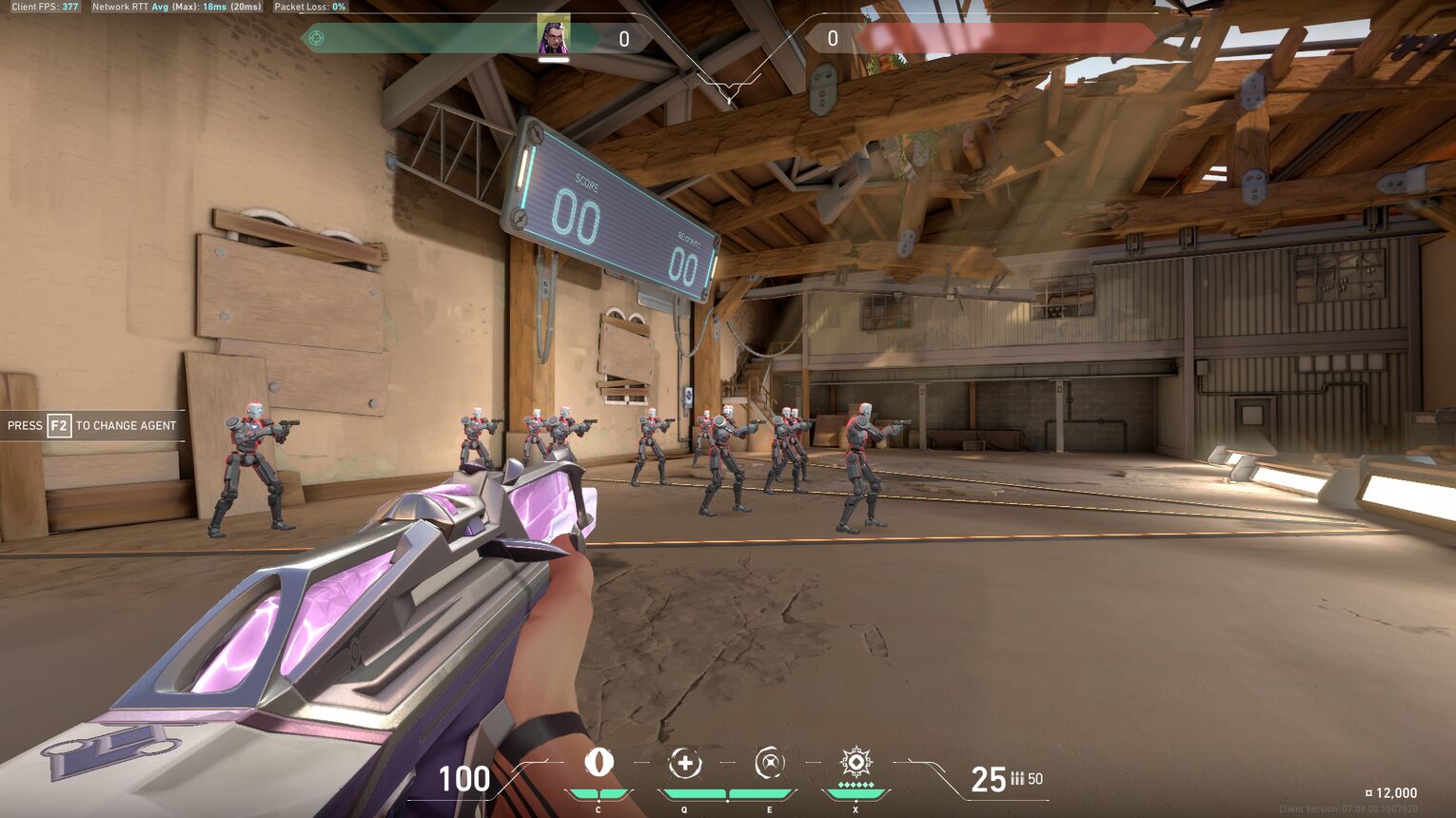
Keep adjusting the sensitivity until you feel more comfortable with flicking heads at higher speeds. It is essential to try to flick as quickly as possible, or you won’t get effective results. If you still need some help, there are more ways to find the perfect Valorant sensitivity to meet your preference.
Understanding The Map’s Terrain, Angles, and Elevations
Players who have amazing aim won’t be able to place their crosshairs properly if they are playing on a map for the first time. This is because different maps have different terrains and elevations.
On every Valorant map, you must understand where an opponent’s head will appear when they peek at you from different angles. This will help you hit more headshots in Valorant.
For example, maps like Split have lots of high-ground and low-ground elevations. You need to get used to these elevations so you can place your crosshair properly at head level.
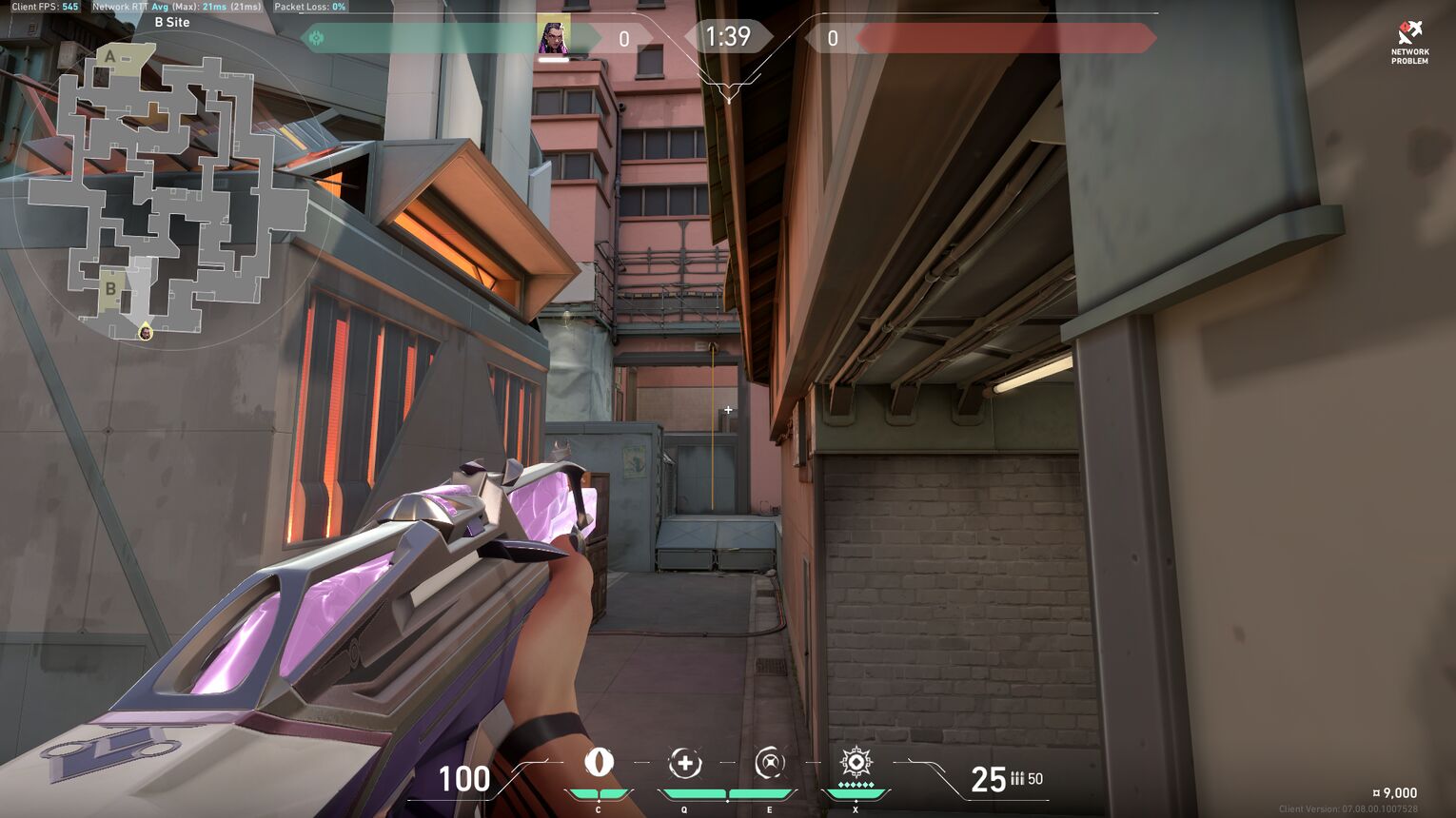
If you are a new Valorant player or are trying to learn a new map, we suggest familiarizing yourself with the Valorant maps. You can do this by loading into a private server on the map you want to practice.
All you need to do is walk around the map while placing your crosshair at head level at all times. All maps will have varying terrains, and even slight elevations can mess up your crosshair placements since aiming at head level requires precision.
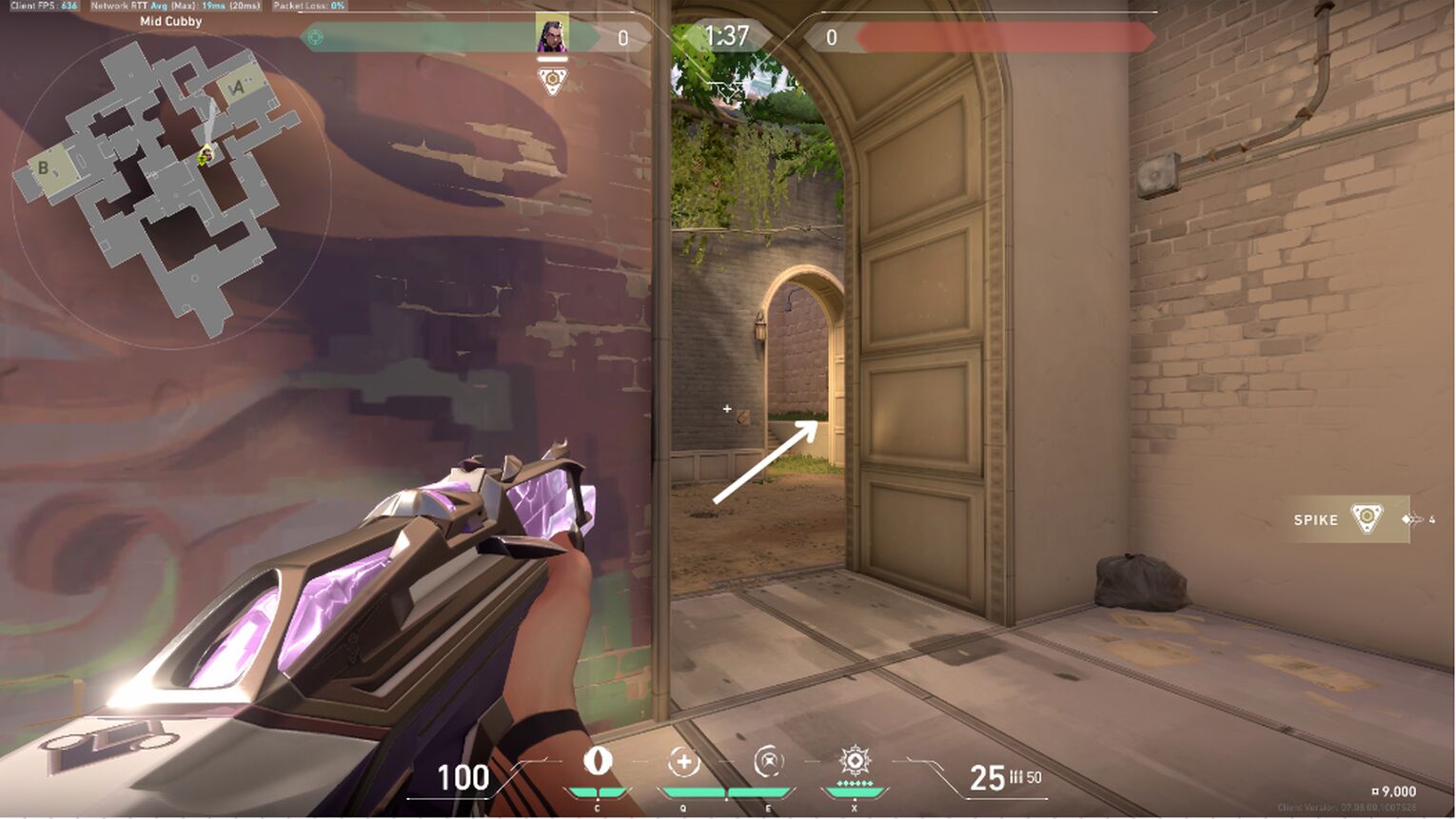
A bonus tip would be to figure out the most common angles on the map. You need to learn these angles and understand where an enemy’s head would be if they were holding these angles. This will allow you to pre-aim these angles and have your crosshair ready as you are going to peek.
Clear Angles Systematically
When you are entering a bomb site, Defenders could be hiding anywhere. It is crucial that you slowly clear your angles in a way that you are not exposed to multiple spots that Defenders could be behind.
For example, let’s say, on the map Ascent, you’re in A Long and are about to enter the A Site. Defenders could be anywhere. They could be playing close, Generator, Dice, Heaven, or even Hell.
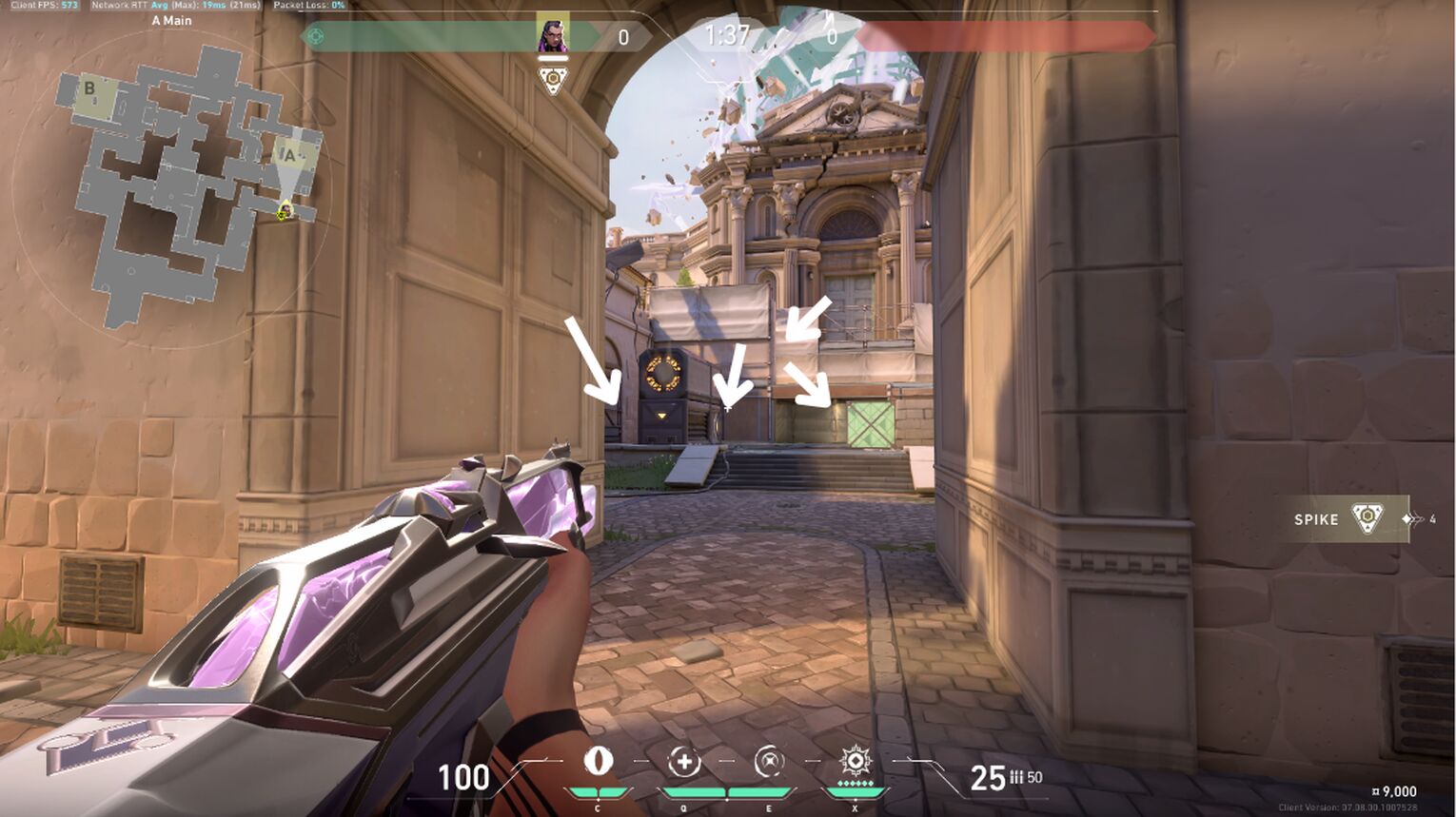
As fast as possible, you want to clear out these angles one by one without exposing your body to angles you have not cleared yet. To do this, it is essential to adjust your crosshair placement to isolate all the different angles you are clearing. This requires the previous method, as you will need a good understanding of the common angles and where to place your crosshair for each.
When clearing angles systematically, it’s vital to keep your crosshair placement steady since you will need to focus on movement and strafing. If you have the perfect crosshair placement for an angle, all you need to do is move your agent instead of your mouse.
Predict Enemy Peeks When Holding Angles
When holding angles, it’s important to understand and predict how an enemy would peek at you. These predictions will directly influence where you choose to place your crosshair.
There are two main factors to placing your crosshair when holding angles: the distance between you and the angle and how common the angle you are holding is.
Understanding Distance
First of all, if you are holding an angle closely, you want to place your crosshair further from the wall. This is because an enemy that is right in front of you will move much faster on your screen since the distance between you and the enemy is very short. That way, you should give yourself some room to work with and place your crosshair further out.
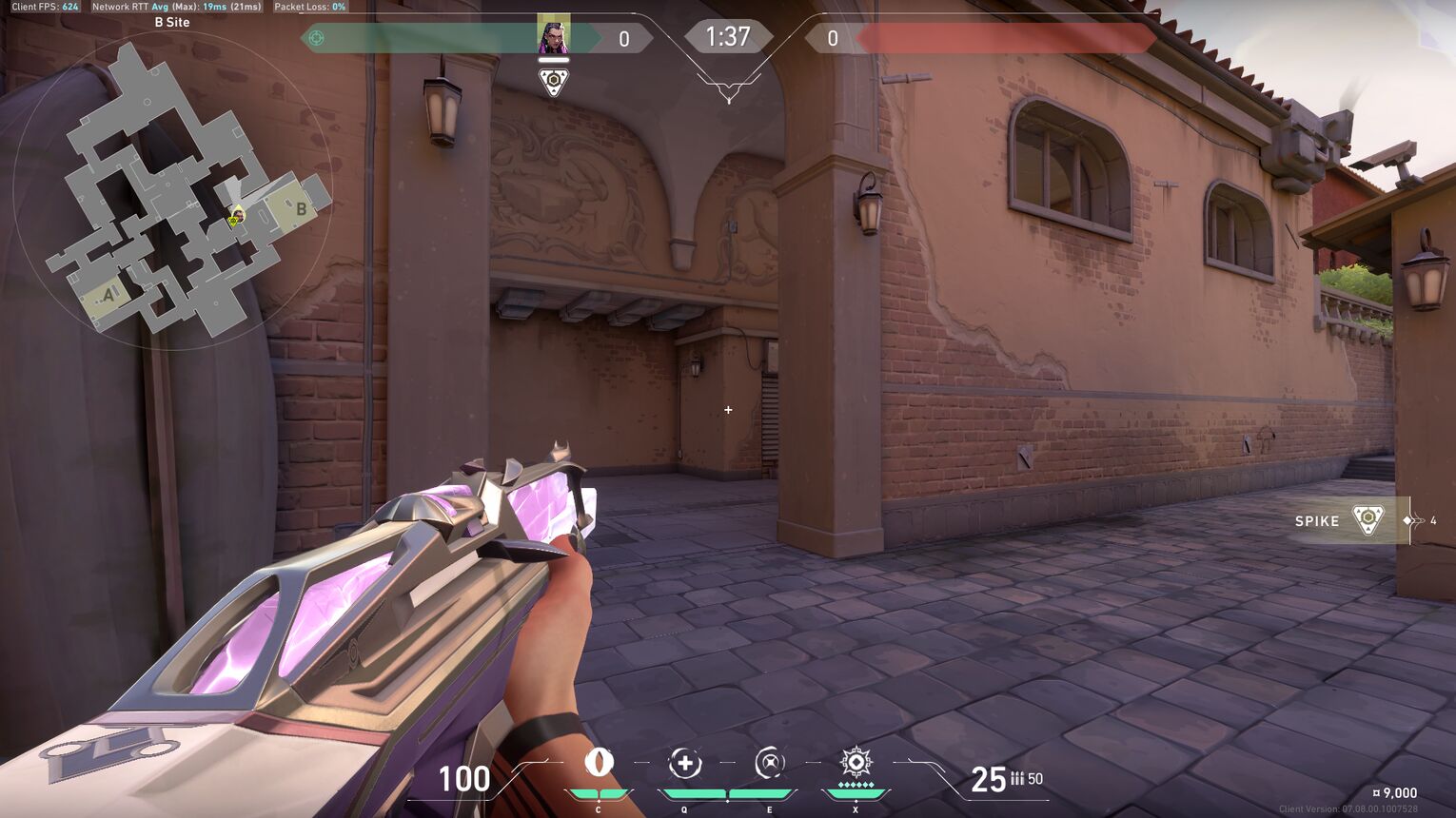
However, if you are far away from the angle, try placing your crosshair closer to the wall. Since the distance between you and your enemy is far, the enemy will be moving slower on your screen, giving you more time to react and shoot.
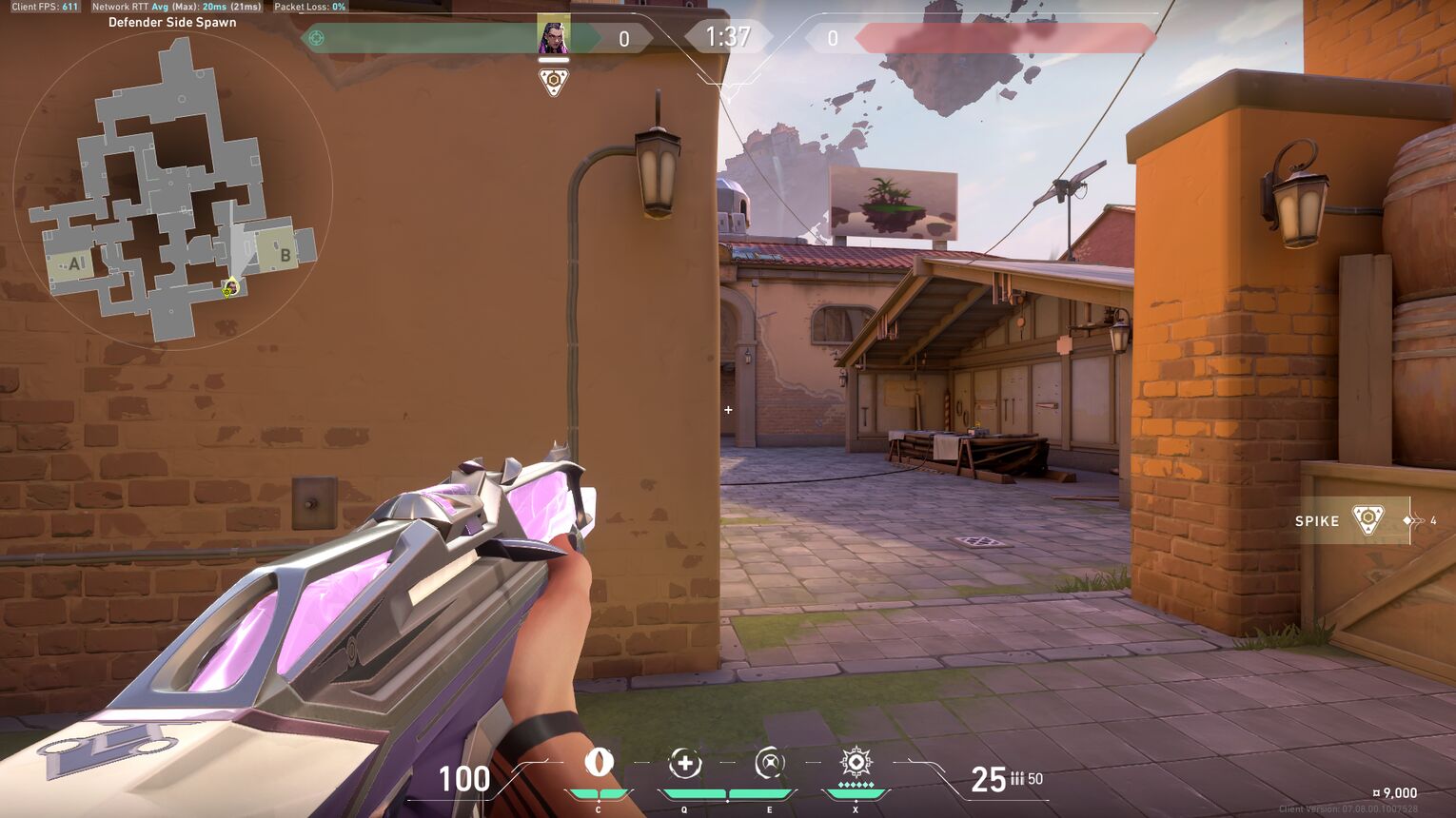
If you are using an OP, you are more often holding long-distance angles than short ones. So, you would place your crosshair closer to the wall.
Holding Common Angles
We talked about clearing angles systematically, and this time, you can put yourself in the shoes of your enemies. When you’re holding an angle, you want to think about how your opponent would clear you. There are three main types of peeks:
Normal peek: Players swing until they see you, then stop to shoot you.
Wide peek: Players walk a longer distance, then stop to shoot you. Very effective against OPers.
Jiggle peek: Players who know how to jiggle peek slightly reveal their bodies to bait shots, especially from OPers.
If you are holding a common angle, an enemy is likely to peek you normally. That way, you can put your crosshair closer to the wall since you are expecting them to stop and shoot you.
Meanwhile, if you are holding an off angle (uncommon angle), most enemies won’t peek you normally and might even run past you. If that’s the case, then you can place your crosshair further from the wall to catch their head when they’re still running.
Aim Training And Watching Your Own Gameplay
Practice makes perfect. No professional player has made it without training. They have spent years honing their aim; the process doesn’t come for free.
Training Your Aim
To practice crosshair placement skills, the most important way is to train your aim. If you’re serious about getting good at Valorant, you might want to consider a training routine. Daily routines can be simple, like shooting targets in The Range or use Aim Lab for 10-30 minutes to improve your game. Or, you can also play two to three Deathmatches every day before playing your first Ranked match.
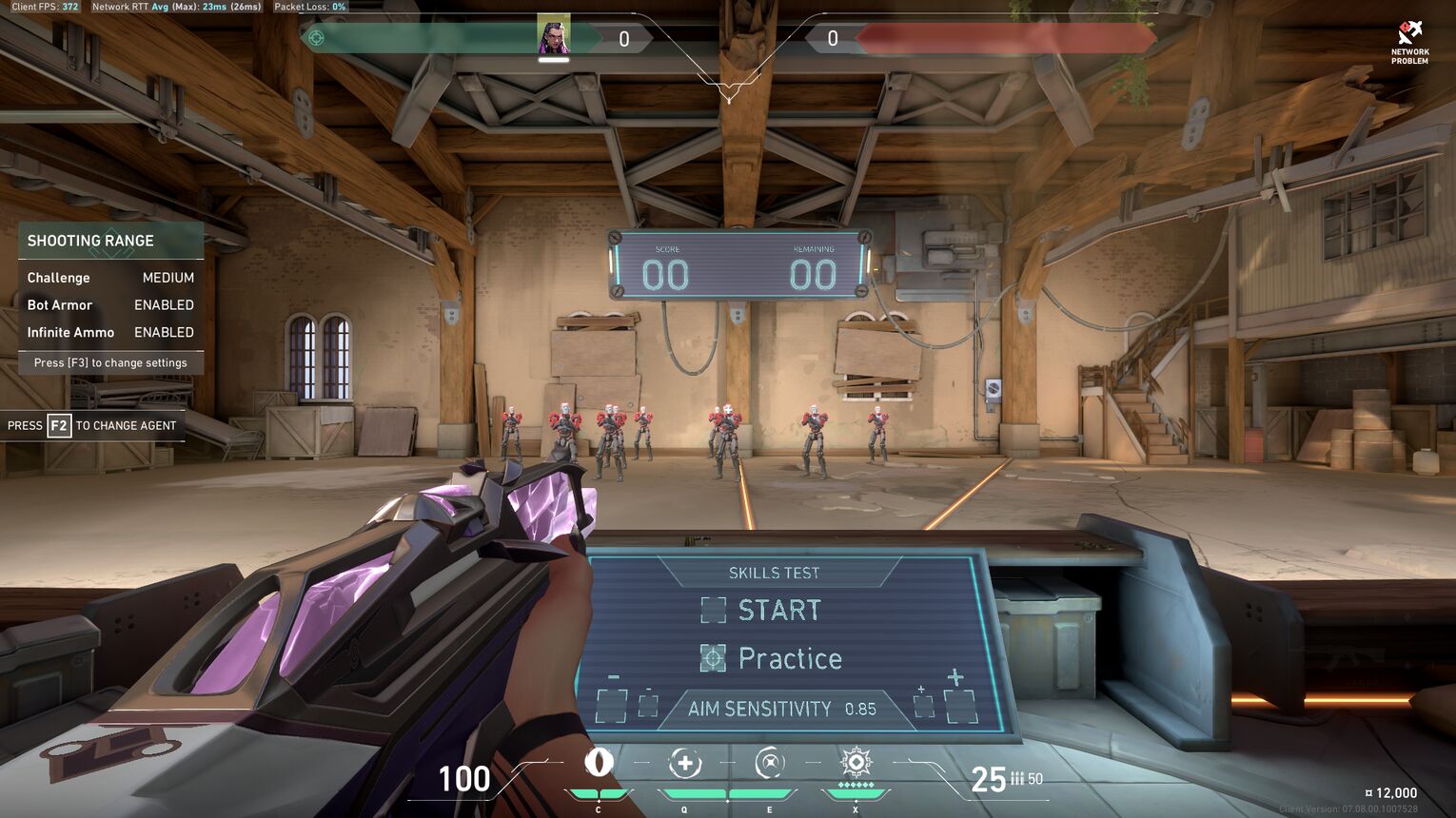
Honestly speaking, the intensity or difficulty of the routine doesn’t really matter. What’s important is that you stick to it. Consistency is the most important part of a routine. Results won’t come immediately, but you will definitely see results over time if you train properly.
Reviewing Your Gameplay
Finally, another way to improve your crosshair placement is through self-introspection. Try recording two or three full Valorant matches, then rewatch the game.
Focus on your crosshair placement. Are you looking at the floor from time to time? Did you lose an aim duel because your crosshair was in the wrong position? Are most of your kills body shots, which could have been headshots if proper crosshair placement was applied?
These are questions you can ask yourself. Professional players watch their replays all the time, and that’s why they have impeccable aim and crosshair placement.


.svg)


![How Does Valorant Make Money? [5 Ways]](https://theglobalgaming.com/assets/images/_generated/thumbnails/3386415/how-does-valorant-make-money-valorant_03b5a9d7fb07984fa16e839d57c21b54.jpeg)
![How To Fix Valorant 1TB File Size Bug [Fast & Easy]](https://theglobalgaming.com/assets/images/_generated/thumbnails/407081/1TB-SIZE-FILE-FIX-VALORANT_03b5a9d7fb07984fa16e839d57c21b54.jpeg)
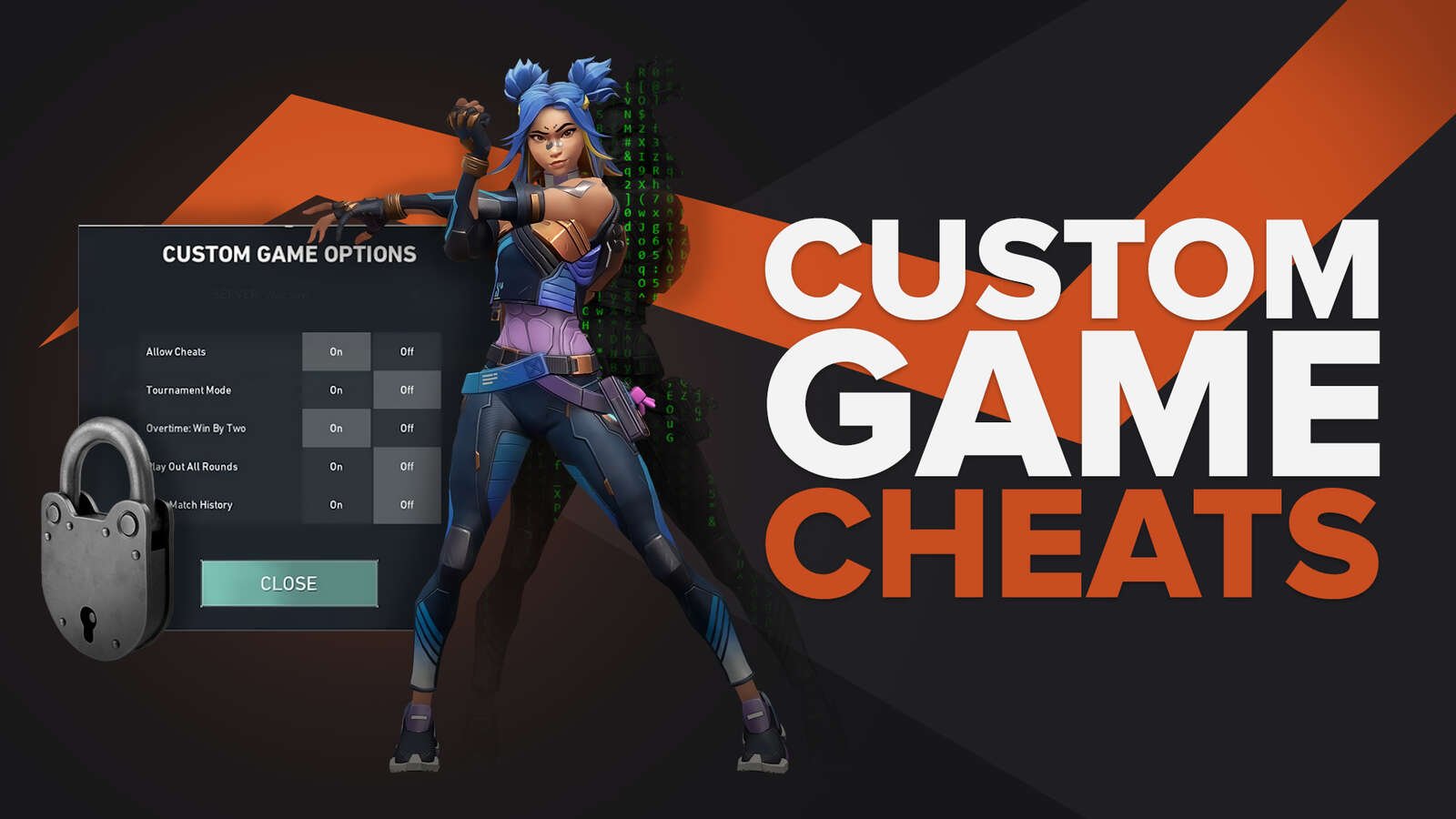
![Best Raze Lineups on Icebox [2024 Guide]](https://theglobalgaming.com/assets/images/_generated/thumbnails/58004/6248e15f44720bcdc407f796_best20raze20lineups20icebox20valorant_03b5a9d7fb07984fa16e839d57c21b54.jpeg)